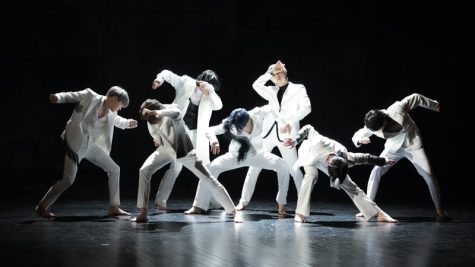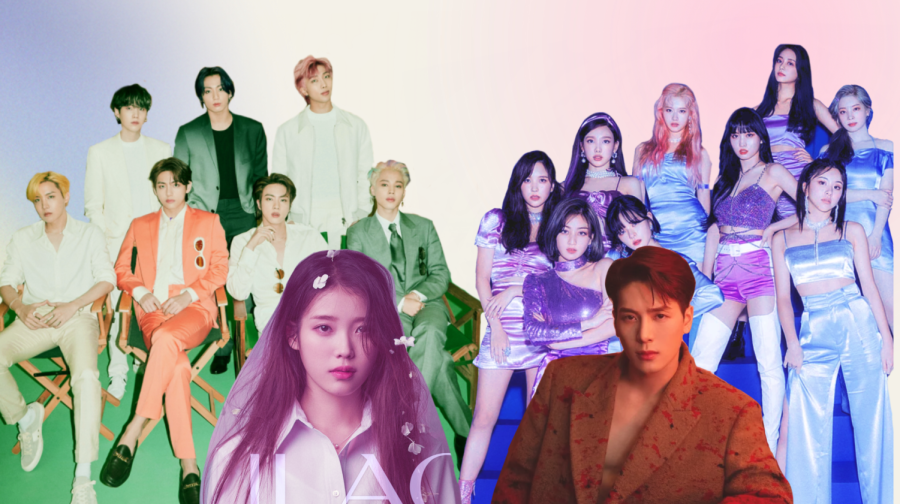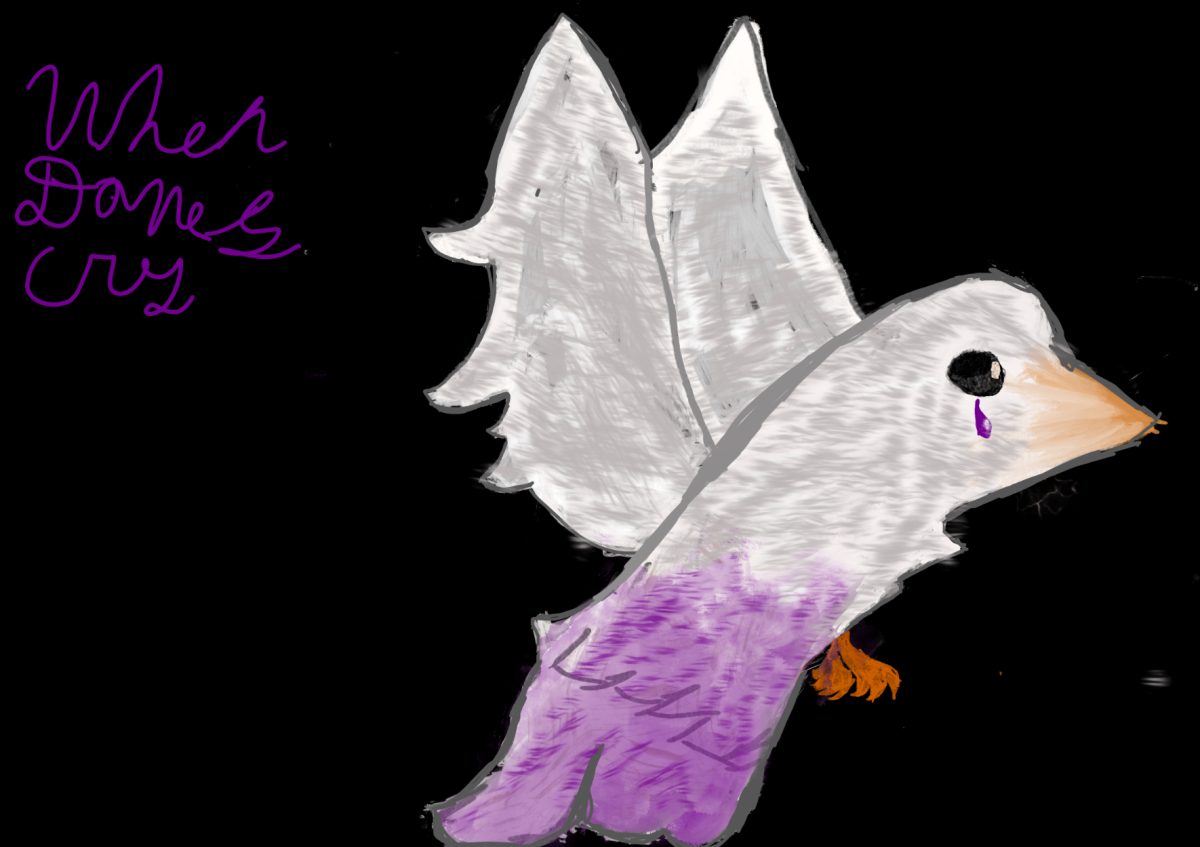The 5 Factors That Made Kpop Light Up like Dynamite
(Left to right) BTS, solo artist IU, TWICE, and solo artist Jackson Wang
January 24, 2022
This is one of three in a series about exploring the world of K-pop from how the industry placed itself on the map to personal opinions as well as experiences.
Whether a fan or not, one cannot deny the rise of K-pop there has been–even a pandemic couldn’t stop it. Yet many have asked, even myself, why is K-pop so popular? Well, this genre’s success is no coincidence or mystery. Just as you would bake a cake, the K-pop industry had a recipe of its own and I’m about to break it down into its five main ingredients.
1. Catchy Music
Many K-pop songs follow the traditional songwriting structure: an intro and a verse with hooks in the chorus. These “hook songs” emphasize catchiness through devices like repetition, said Dal Yong Jin, a professor at Simon Fraser University. Let’s take SuperJunior’s song “Sorry, Sorry”, where they repeat continuously English and Korean words that make it so catchy that it’s actually in the list of banned songs to play when students in Korea need to study for their SATs.
Now in 2021 though, many K-pop groups and idols took the chance to try and dive into the western music world by releasing full-length English songs which proved to be effective like BTS’s “Butter” breaking chart records and TWICE–a famous K-pop girl group–making their way into the Billboard Top 200 for the first time with their single “The Feels.” What audiences listen to isn’t the only thing that attracts them to the genre as the visuals are also captivating.
2. Memorable Dance Moves
Although with the music there are some language barriers, dance transcends them all. Among the intense choreographies found in group performances, they always include a signature dance move–which they call the key point dance– for fans to easily imitate, memorize, and share on social media.
“Trendy dances are what makes K-pop, K-pop,” said choreographer Sienna Lalau, who has worked with BTS, Jennifer Lopez, and Missy Elliott, “because it reminds us that in some ways, the movement is as important as the music in today’s ‘content is king’ era.”
A prime example of this is TWICE’s “The Feels” which along with its catchy rhythm has a signature dance move that took TikTok by storm for a long time with even @tracy.oj –a young woman who is very well known for her creation and cover of TikTok dances–joining in.

3. Genius Use of Social Media
Speaking of TikTok, K-pop would have stayed in South Korea if it weren’t for the power of social media and new technology that has allowed fans all over the world to enjoy the genre. Although many other Asian genres like Japanese pop have tried to break through, Korean pop had the advantage of good timing by using social media very early on. One of their marketing strategies is to give up copyrights and release songs and albums to stream on YouTube at the same time they become available for purchase so the amount of streams skyrockets.
What better example than one of the first K-pop songs to break through the United States, Psy’s “Gangnam Style” released back in 2012 topping the charts on Youtube as one of the most-watched videos on the platform. And yet, we can’t deny the help of other social media like Twitter where many celebs like Britney Spears tweeted about the song. Still, it helped Psy rank No.2 on the Billboard Top 100 chart, being the second K-pop artist to rank.
“That video that was just this kind of early look at like how to create a virality on YouTube,” said YouTube music trends manager Kevin Meenan, who described the video as “snowballing” through the platform.

4. Music Videos like Never Seen Before
As if a catchy song and dance weren’t enough, the music videos these groups release are a whole other world…a genius one at that. Why? The theatricality of them is never-ending from top-notch effects, huge sets, colorful and synchronized outfits, etc. To this day many of the most viewed music videos are mostly K-pop videos among them BTS and BLACKPINK ones that have surpassed 1 billion views.
Yet the biggest key to some of the most successful music videos is the ability to tell a story relating to the song’s lyrics while at the same time entertaining viewers.
“What I think is so alluring about them is the massive attention to detail,” senior Cecilia Sanchez commented about K-pop music videos. “In a lot of Western music videos, it’s just like really simple shots of just the artist singing to the camera and that’s it. Unlike in K-pop music videos, there’s like a whole dance number and storyline that everyone tries to figure out.”
One example is BTS’s “Black Swan” which has a dark and depressing tone and mood which breaks away from other K-pop music videos that are a lot about being flashy and colorful. The song tells the story of an artist who fears the death of his career. The more you watch the video, you start to find deeper meanings which takes this video to a whole new level.

5. The Fans
Sure, Justin Bieber has his Beliebers and Lady Gaga has her Little Monsters but K-pop fandoms are in another league with physical identifiers: colors, names, glowsticks, and chants helping them have an enormous influence in the industry.
Nowadays with the power of the internet, idols and fans have a stronger connection like never before from switching keywords on Twitter to creating clubs and organizations. They buy and collect their albums, support organizations their idols support, stream for the groups to win awards, etc. Overall though, always look to give back for what their favorite groups offer them which are a safe space, meaningful messages, catchy music, and a community to be a part of for as long as you need.
“It feels like one ginormous family,” said Jackie Alvarez, the chief financial officer of the US BTS ARMY about the BTS fandom. “We can … give back to them what they’re giving back to us.”
















